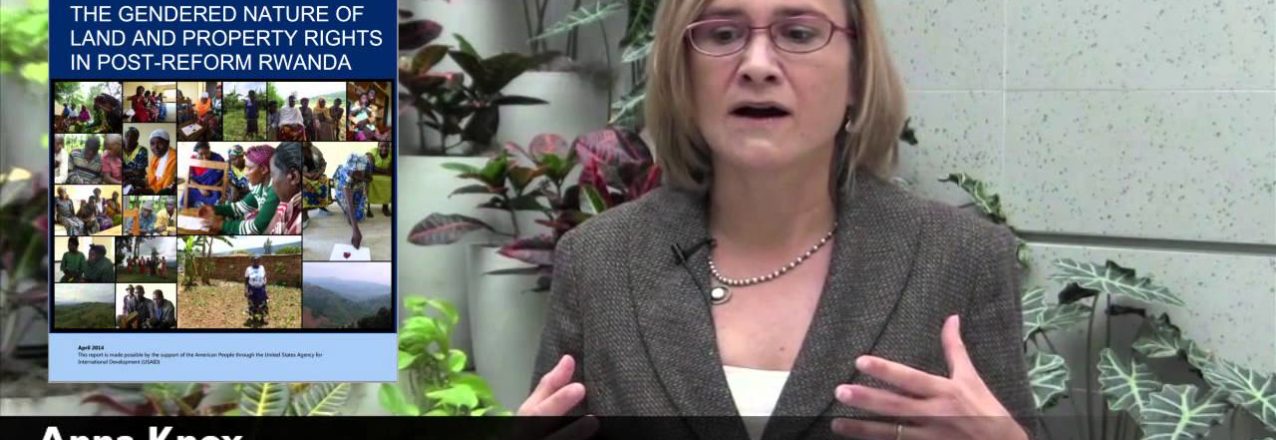In Forécariah, Guinea, a remote-controlled mini-helicopter provided in cooperation with the United States Geological Survey (USGS) is helping the Government of Guinea and the local community aerially map the most likely locations of diamond deposits. That information will enable miners to lease parcels of land that are more likely to generate a return on their investment, the Government of Guinea to better monitor and regulate artisanal mining, and farmers to grow crops on surrounding land with fewer conflicts. Land conflicts in the region are expected to decrease overall due to this effort. This project, and others that are innovatively combating poverty, will be featured at USAID’s Frontiers in Development conference on September 18-19, 2014.
The aerial mapping in Guinea is necessary because neither the government nor miners know where diamonds are most likely to be found. Alluvial diamonds are carried by rivers and deposited across valleys and plains; without geologic surveys, the only way to find them is by beginning to dig and look for telltale signs of their presence. The mini-helicopter uses GPS and a camera to collect high-resolution aerial photos and videos through a process developed by USGS to map the elevation and terrain, leading to possible better understanding of where deposits may be found. The imagery will also be used to help in community mapping of property boundaries. Members of the community were introduced to the mini-helicopter prior to its first flight and confirmed that it would be useful to know where diamonds might be found or where they could continue agricultural practices uninterrupted.
Like many countries, Guinea’s poor resource governance and insecure land tenure have allowed artisanal miners and mining areas to be exploited by predatory actors trying to control and benefit from mineral resources. Consequently, mines are exhausted and left degraded – unfit for agricultural use and often serving as malarial breeding pools, and miners themselves are constantly on the move to new mining areas—sometimes forced to work—never earning full value for the minerals they extract. In order to address this exploitation and the trade in conflict minerals, miners must have clear and secure rights to use land for mining and/or for other economic uses such as fish ponds or gardens.
Through the Property Rights and Artisanal Diamond Development (PRADD) project – a joint initiative by USAID, USGS, and the U.S. State Department – the United States is taking a whole-of-government approach to supporting the Kimberley Process (KP), the international mechanism that prevents rough diamonds from fueling conflict. PRADD was implemented from 2007 to 2013 across the Central African Republic, Guinea, and Liberia. In all countries PRADD’s goals included: 1) improving compliance with the KP; 2) increasing the number of diamonds entering the formal chain of custody; 3) improving livelihoods; and 4) rehabilitating the environment. The KP’s Washington Declaration urges KP member states to improve livelihoods, resource governance, and land tenure. PRADD II is a $19-million, five-year initiative that is now being implemented in Guinea and Côte d’Ivoire (with co-funding from the EU in Côte d’Ivoire). Each country program responds to the realities of rural livelihoods in that country and provides particular strategies for: improving resource governance (including passing or amending laws, building capacity, or changing fees); strengthening local mining communities (with a focus on land rights, resilience, formalization of their work, and incomes); and rehabilitating exhausted mine sites.
PRADD’s positive impact on local communities is clear. In the Central African Republic, PRADD assisted the mining ministry’s distribution of nearly 3,000 “certificates of customary rights.” After only one year, the number of diamond-related conflicts plummeted from 142 to 4 in the area of project implementation. By December 2012, 654 artisanal mining sites had been rehabilitated through gardening, tree planting, and fish pond construction, and some former miners earned more income from fish farming than mining. In Guinea, PRADD had been suspended in 2009 when the government was overthrown, but restarted in 2013 with a multi-step consultative process to define the program activities. The process sought input from KP stakeholders (government, civil society organizations, and the diamond industry), the private sector, and other donor-funded programs (e.g., the World Bank), as well as local communities, through interviews with men and women of all ages, migrating diamond miners, and local authorities. Through the aerial mapping exercise described above, it is expected that land rights, environmental stewardship, and incomes will all improve.
PRADD has also made a global impact, providing technical assistance to the Ivorian Government so that Cote d’Ivoire could meet the KP minimum requirements and have its nine-year United Nations embargo on diamond exports lifted.
Beyond the diamond trade, USAID is also working to strengthen property rights and promote responsible mineral trade and clear chains of custody through the Capacity Building for Responsible Minerals Trade (CBRMT) project in the Democratic Republic of Congo and the Addressing Biodiversity-Social Conflict in Latin America (ABC-LA) project.
Learn more about PRADD’s work in Guinea at USAID’s Innovation Marketplace during the Frontiers in Development Conference, which will take place in Atrium Hall in Washington, DC’s Ronald Reagan Building on September 18 and 19 from 8:30 am to 4:00 pm.


